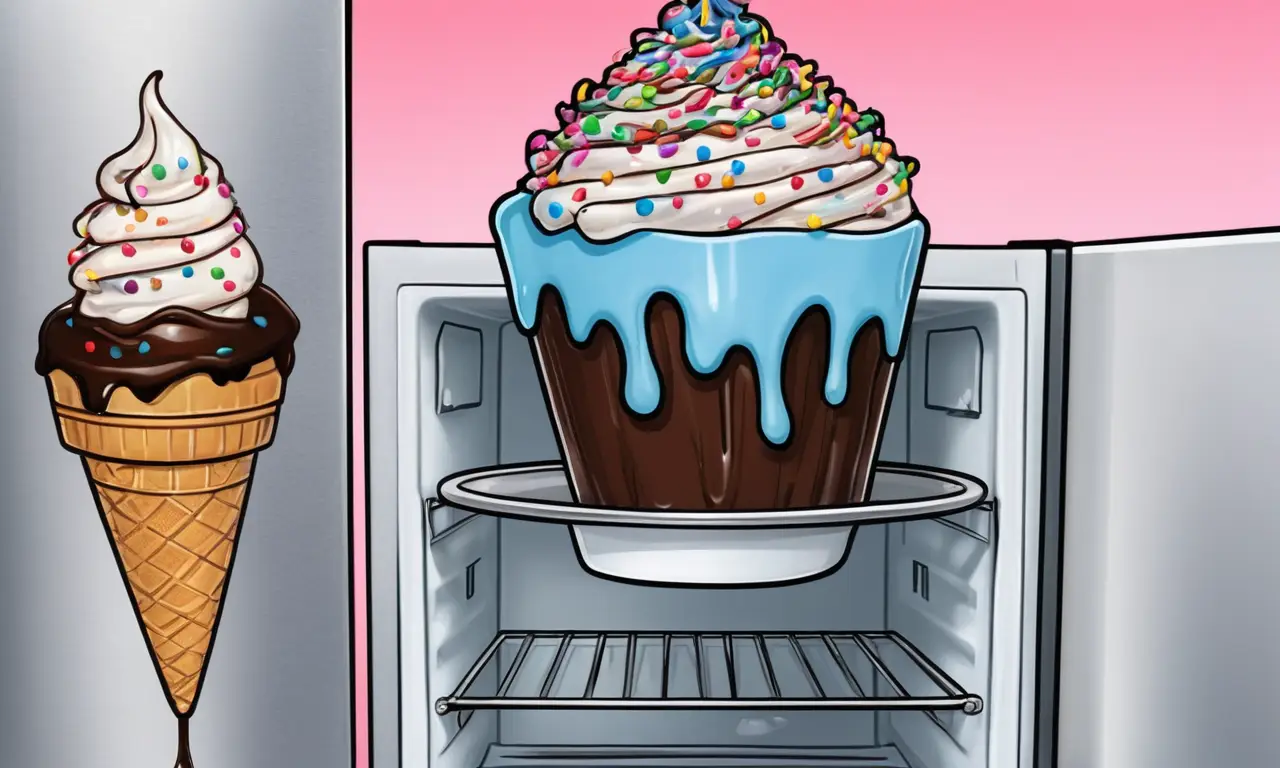
Ice cream is a beloved treat enjoyed by people of all ages. However, it’s crucial to understand the importance of proper ice cream handling and storage to prevent foodborne illness. Leaving ice cream out at room temperature for extended periods can create a breeding ground for harmful bacteria, leading to spoiled treats and potential health risks. This article will delve into the essential guidelines for keeping your ice cream safe and delicious.
This comprehensive guide will explore the ideal temperature range for storing ice cream, the significance of the two-hour rule, the dangers of foodborne illness, and the recommended time frame for consuming ice cream after removing it from the freezer. By following these simple yet vital tips, you can ensure a safe and enjoyable ice cream experience.
Ice Cream Temperature Safety
Maintaining the correct temperature is paramount when it comes to ice cream safety. The ideal storage temperature for ice cream is 40°F (4°C) or below. This cold environment effectively inhibits the growth of bacteria that can cause spoilage and illness. When ice cream is stored at temperatures above 40°F, bacteria multiply rapidly, compromising its quality and posing a health risk.
To ensure your freezer maintains the optimal temperature, regularly check the thermostat and make sure it’s set to 0°F (-18°C) or lower. Avoid overcrowding the freezer, as this can hinder proper air circulation and lead to uneven cooling. Additionally, keep the freezer door closed as much as possible to prevent warm air from entering and raising the internal temperature.
Two-Hour Rule

A widely recognized guideline for food safety is the two-hour rule. This rule states that perishable foods, including ice cream, should not be left at room temperature for more than two hours. After this time frame, bacteria have had sufficient opportunity to multiply to unsafe levels, increasing the risk of foodborne illness.
If the ambient temperature is above 90°F (32°C), the recommended time limit for leaving ice cream out is reduced to one hour. This is because warmer temperatures accelerate bacterial growth. When in doubt, err on the side of caution and refrigerate your ice cream promptly.
Foodborne Illness Prevention
Foodborne illness can result from consuming food contaminated with harmful bacteria, viruses, or parasites. Symptoms of foodborne illness can range from mild discomfort to severe complications, including nausea, vomiting, diarrhea, abdominal cramps, fever, and dehydration. In some cases, foodborne illness can even be life-threatening.
To minimize the risk of foodborne illness, it’s crucial to practice proper food handling techniques. This includes washing hands thoroughly with soap and water before and after handling food, cooking food to safe internal temperatures, avoiding cross-contamination between raw and cooked foods, and refrigerating perishable items promptly.
Optimal Consumption Time

While ice cream can be safely stored in the freezer for several months, it’s best enjoyed within a few weeks of purchase for optimal flavor and texture. Once removed from the freezer, aim to consume your ice cream within one hour for the best quality and safety.
After one hour, the ice cream may start to soften and become more susceptible to bacterial growth. If you have leftover ice cream after an hour, transfer it back to the freezer promptly to prevent spoilage.
Refrigeration Importance
Refrigeration plays a vital role in maintaining the safety and quality of ice cream. The cold temperatures inhibit bacterial growth, preserving the flavor, texture, and nutritional value of the treat. When storing ice cream, ensure that it is placed in an airtight container to prevent freezer burn and maintain its freshness.
Regularly check your refrigerator’s temperature to ensure it is set at 40°F (4°C) or below. Avoid overcrowding the refrigerator, as this can hinder proper air circulation and lead to uneven cooling.
Conclusion
Enjoying ice cream safely and responsibly involves understanding the importance of proper handling and storage practices. By adhering to the guidelines outlined in this article, you can minimize the risk of foodborne illness and ensure that your ice cream remains a delicious and enjoyable treat. Remember to keep how long can ice cream be left out in mind, refrigerate promptly, and consume within one hour for optimal safety and quality.
